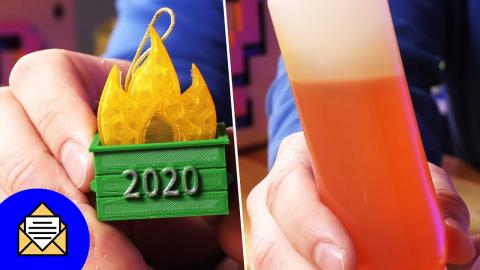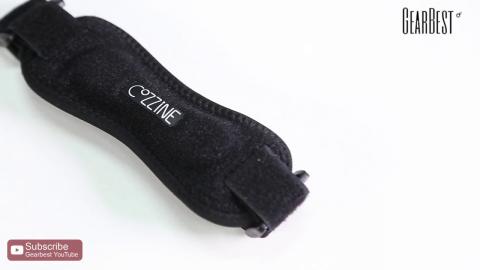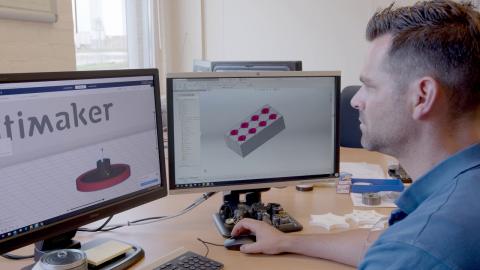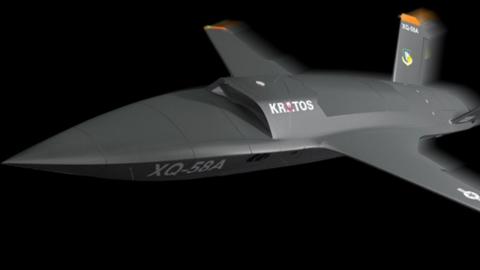How to Make an Inexpensive Camera Stabilizer Grip
Description
We made a camera stabilizer out of cheap and scrap materials!
This video was sponsored by SimpliSafe, check them out at http://ilt.ms/simplisafe
Subscribe to my channel: http://bit.ly/1k8msFr
Second Channel: http://bit.ly/iltms-2
MORE PROJECTS, POSTS AND EVENTS
http://www.iliketomakestuff.com
TOOLS & SUPPLIES (affiliate links):
https://kit.com/iliketomakestuff/inexpensive-camera-grip
https://kit.com/iliketomakestuff/video-shooting-kit
https://kit.com/iliketomakestuff/shop-safety-gear
BECKY STERN'S VIDEO:
https://www.youtube.com/watch?v=Njo2AgF-ZBk
Twitch Stream Every Wednesday @ 11am EST: www.twitch.tv/iliketomakestuff
I WROTE A BOOK!!
http://www.iliketomakestuff.com/makingtime
Want to support ILTMS? Get exclusive content and more...
http://www.iliketomakestuff.com/patreon
BUY A SHIRT, STICKER, DIGITAL PLANS and MORE!!
http://www.iliketomakestuff.com/store
FOLLOW:
http://twitter.com/iliketomakestuf
http://www.twitch.tv/iliketomakestuff
http://instagram.com/iliketomakestuff
http://facebook.com/iltms
You've probably notice more dynamic camera work in the past few months. My friend Josh is working with me and shoots all of my videos. He noticed that it would be way more comfortable and consistent if the DSLR camera we use had a camera stabilizer.
The basic concepts behind this camera stabilizer is that it will be light, sturdy, and comfortable. I had some aluminum C-channel laying around that I decided to use as a rigid yet lightweight platform to build upon. To determine the length of the base, I measure the camera with the view screen open and placed my hands a comfortable distance to either side. Aluminum can be cut using standard wood tools and blades, so I used the miter saw to chop the C-channel to its final length. Rather than the camera rocking forward and damaging any lenses, I made sure to balance the camera on the base front to back. This required an additional aluminum plate because the camera's center of gravity sat behind the C-channel. Some pop rivets were used to secure the new plate to the base and added a wooden spacer underneath. As a result, the whole assembly sat flat on a table and didn't topple over.
Most notably, here at I Like to Make Stuff, all of our cameras are retrofitted with quick-release attachments made by Joby. Each tripod has an articulating Joby receiver so that we can effortlessly move cameras around the shop without worrying about mounting compatibility. The camera stabilizer is no exception; our DSLR cameras had to be able to switch from the new camera grip back to the tripods in an instant. We decided to mount a Joby attachment to the new camera grip using a 1/4-20 bolt. Since we accounted for the camera's center of gravity in the previous step, it was really easy to drill a 1/4 inch hole through the extra plate and hard mount the Joby receiver. While all of my cameras are equipped with mounts, most cameras have a 1/4-20 threaded insert on the bottom so you can bolt the camera directly to the base.
First, we measured how high the grips needed to be. I decided that the grips should be tall enough so that the camera was centered vertically when placed in the mount. Next, we determined the grip shape. We experimented with PVC pipe to save weight, but the diameter was too thin and felt weird when we held it. Once again, I used the lathe to turn two cylindrical grips out of some scrap mahogany. As I carved away material, we kept checking the cylinder by hand until we got a comfortable size. After a few rounds of sanding on the lathe and some decorative finishing work, I drilled and tapped a 1/4 inch hole on the bottom of each piece using the Wood Whisper's Thread Taps. After a coat of spray lacquer had dried, we attached the hand grips to the aluminum base with some more 1/4-20 bolts.
Josh made a point that the camera stabilizer should have an embedded way to operate the camera so that you wouldn't have to awkwardly fumble around to press the focus button and begin recording. After a quick Amazon search, I found a really inexpensive remote that plugs into the DSLR and has a single button that does both of those tasks. We measured where on the hand grip the remote should go and decided that the button should face forward like a trigger. I then used my drill press and some chisels to hog out a space in one handle for the remote to sit. Furthermore, Josh shortened and rerouted the remote's control wire so it didn't get in the way when shooting. The remote was firmly press fit into the hadn't grip and it works great!
In conclusion, widening out the camera posture is more comfortable and makes for more stable dynamic shots. This was a really fun one-day build and I encourage you to find quick, simple solutions to problems in your life.


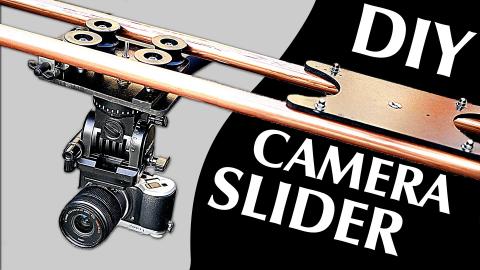

![DJI Osmo Mobile 2 is $129 — The Stabilizer For Your Phone Just Got Better! [CES 2018 Special]](https://www.vortak.net/uploads/thumbs/149980b75-1.jpg)
